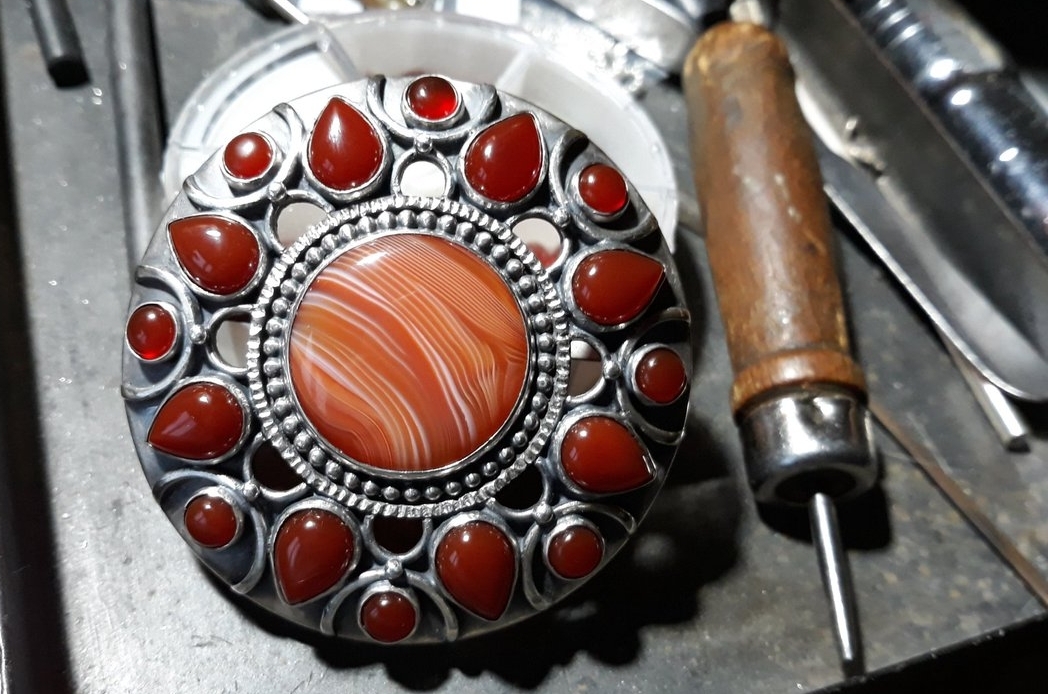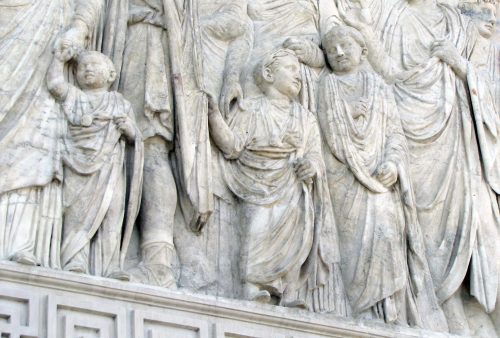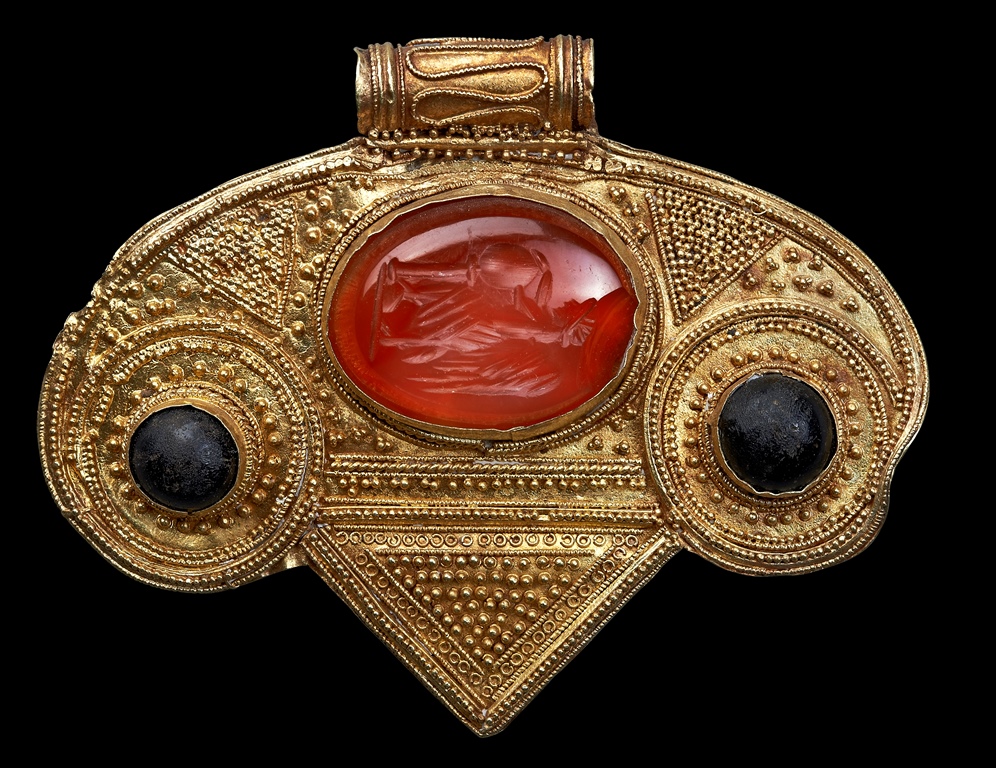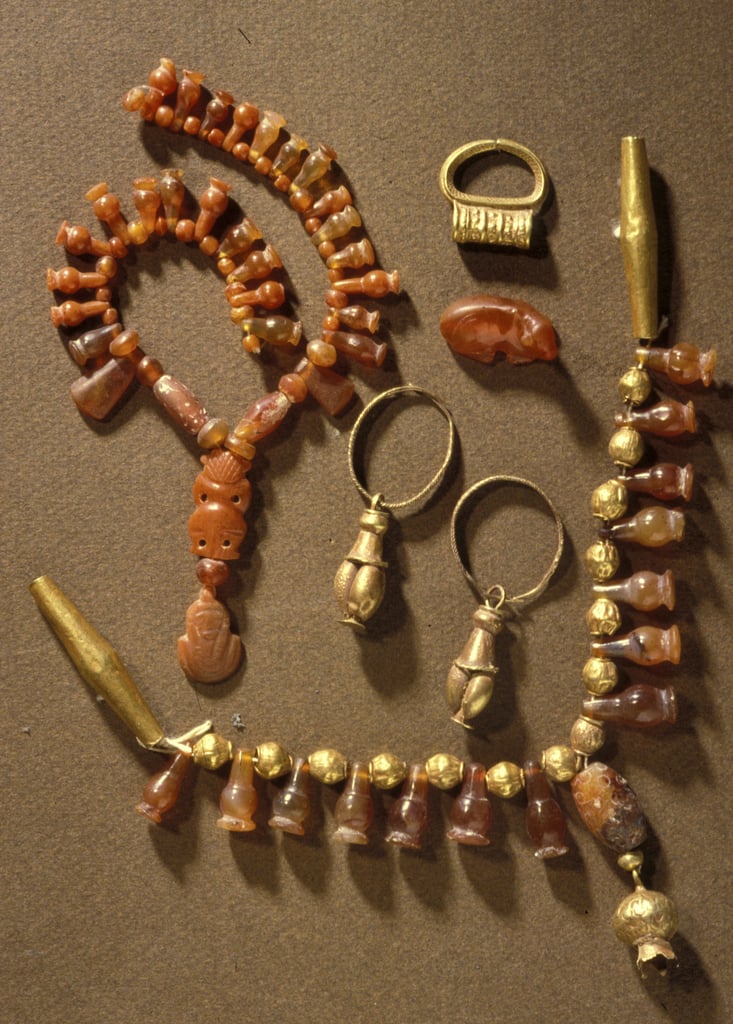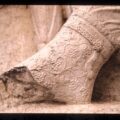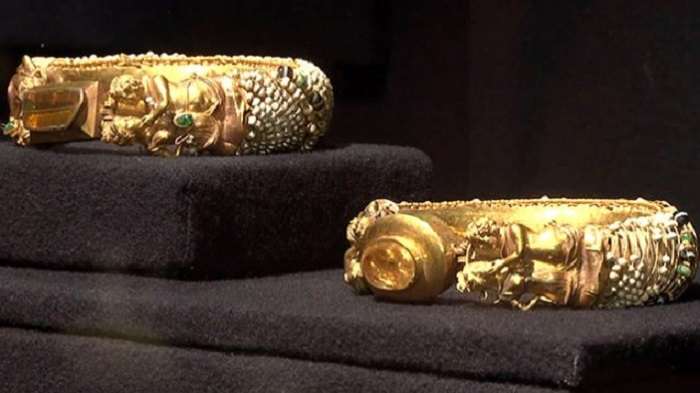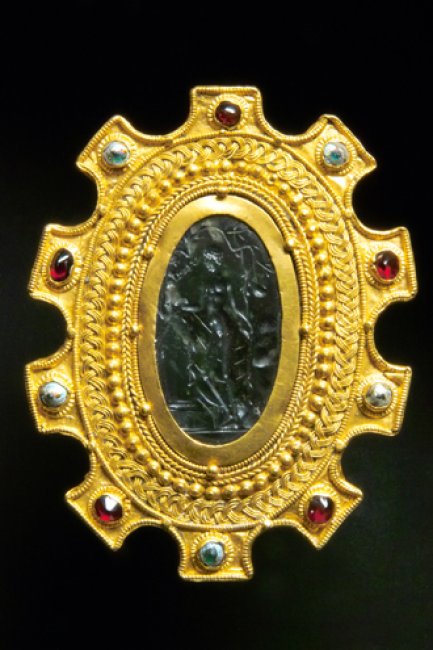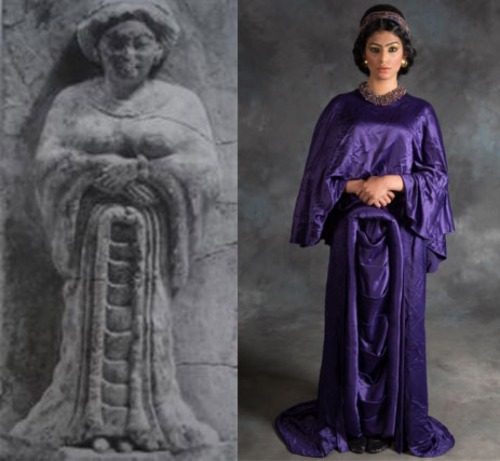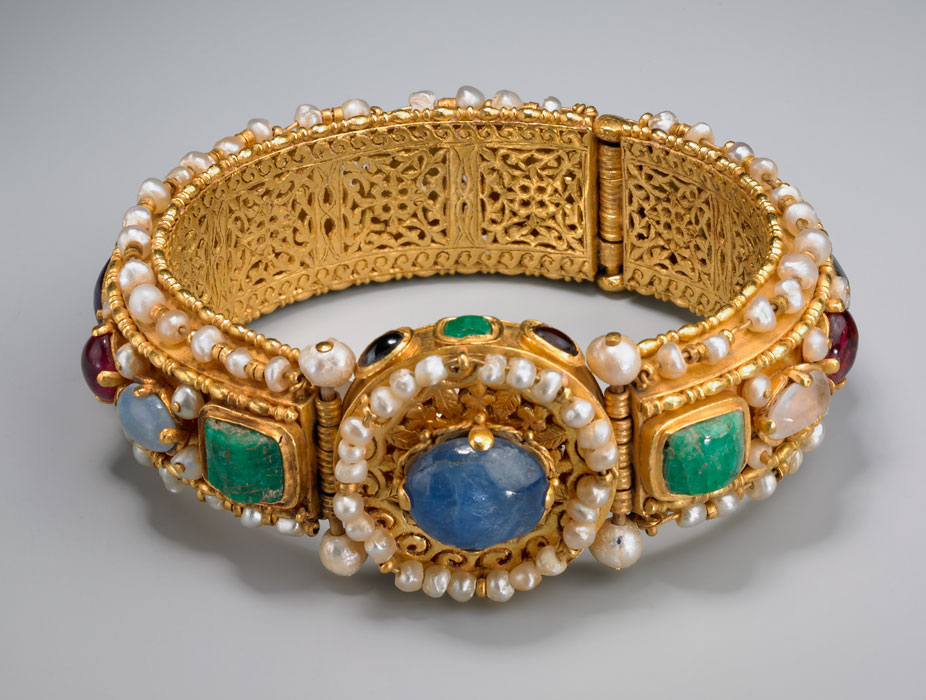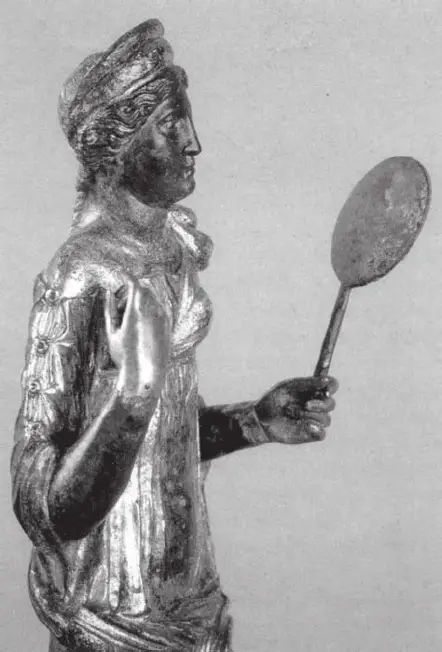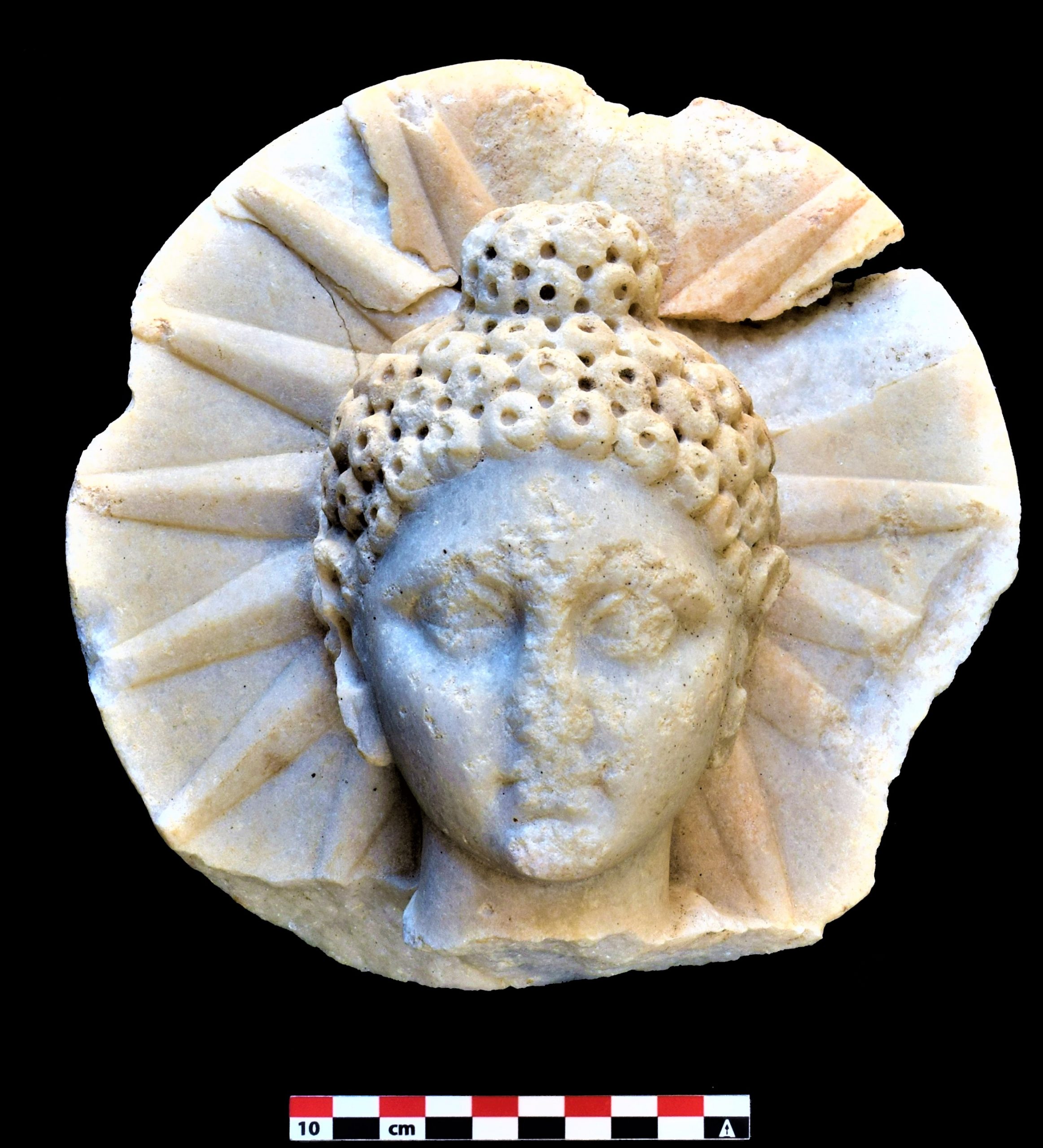- Ara Pacis, 9 BCE © Steven Zucker
Detail of an altar “Ara Pacis Augustae” (Altar of Augustan Peace) with children: Germanicus wearing a bulla pendant, Cneus Domitius Ahenobarbus, and Domitia(?) wearing a lunula. picture
Bulla it’s a lentoid, hollow pendant containing a magic substance, not an amulet per se. It has an Etruscan origin, where was worn regardless of gender. The Romans divided amulets, bullae were intended for boys and were worn until they reached the age of majority, i.e. until the age of 14. The bulla was a distinctly Roman attribute given to a child at birth to mark their status as a freeborn citizen.
The Romans took over from the Etruscans the custom of hanging a bulla around children immediately after birth to ward off magic, especially the evil eye, with an amulet in the cavity. Boys took off the bulla only when they put on the toga virilis, girls usually when they got married. Hollow amulet pendants, mostly made of gold or leather, which were worn on a necklace, were widespread in Roman times, and came to Egypt through the Romans.
The Etruscan bullae were much more elaborated, mostly decorated with Mythological scenes or floral motif in low relief, and they were made not round only. Some of them bear remains of “labdanum,” a substance used in perfume, like the one from the Walters Museum with a depiction of Daedalus and Icarus.
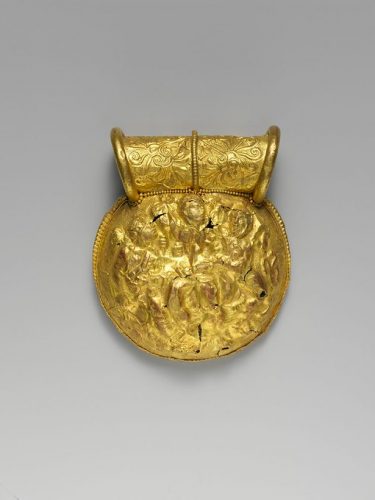 Etruscan bulla, 3rd C BCE; The Metropolitan Museum |  The back side of the Etruscan bulla from The Met | 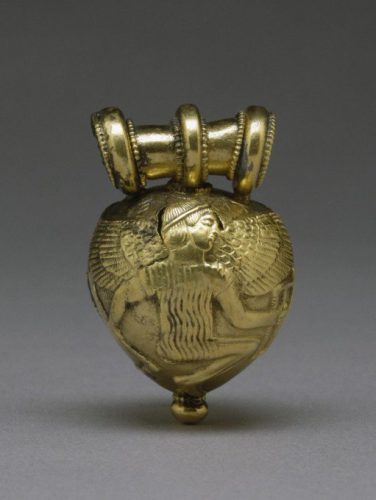 Bulla with Daedalus and Icarus; Etruscan, 5th C BCE; The Walters Art Museum |

Relief of a woman, probably an initiate of the cult of Dionysos (Fulfuns), from Etruscan sarcophagus (a lid). Sarcophagus was found in Tarquinia, Italy, and is dated to 250 BCE.
In Rome bullae were given to the freeborn boys, the Roman citizens.
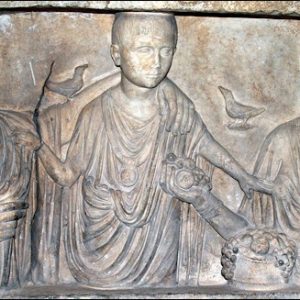
picture
On another tomb relief of c.40–c.30 BC in Rome, the iconography of which also points to a family of ex-slave status, the father wears the toga to which he was entitled only after his manumission and the mother is dressed modestly in
a tunic and palla as a Roman matron.96 The boy between them, no longer an infant, but born free after his parents were released from slavery, is dressed in the toga praetexta and wears a bulla, both devices stressing the fact that
the child is a Roman citizen and therefore holds a privileged status (Fig. 8.13)
Infancy and Earliest Childhood in the Roman World: ‘A Fragment of Time’ Maureen Carrol

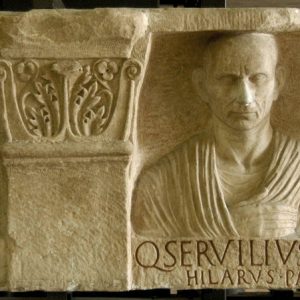
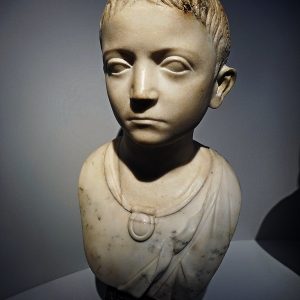
picture Carlo Raso
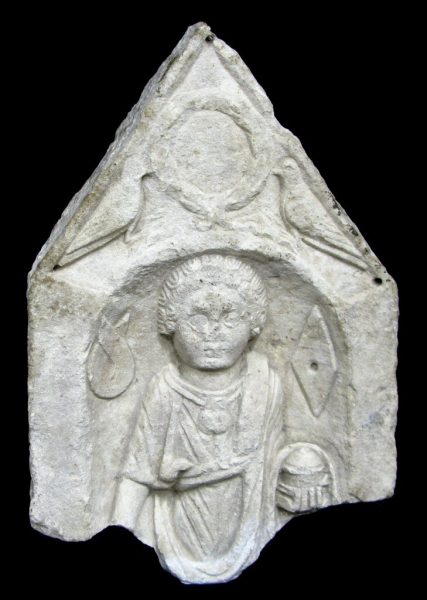
 | Stele with portrait of a boy. Roman, Tunisian. 3rd century CE. Limestone. The central register depicts a standing boy. He wears a toga praetexta, the standard dress for Roman children who have not yet reached puberty, and holds a scroll in his left hand. He also wears a bulla which rests on his chest. In the Yale Art Gallery Inv. no. 1984.121 and 1985.61.1 https://artgallery.yale.edu/collections/objects/7214 https://artgallery.yale.edu/collections/objects/7220  |
| ROMAN BULLAE | |
|---|---|
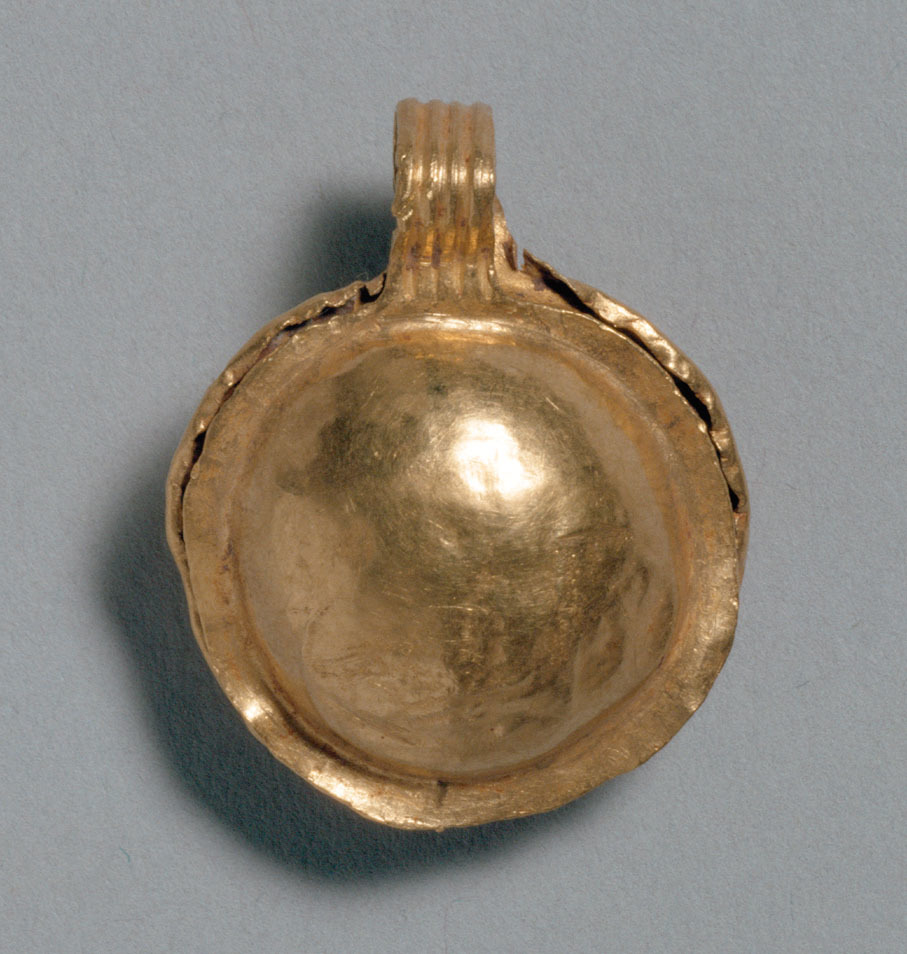 | 1st-3rd century. The disc-shaped pendant is composed of two embossed hemispherical bowls; a ribbed loop on the top. https://www.khm.at/de/object/b1a3f5837d/ |
 Bulla-amulet. Roman, 1st C Palazzo Massimo, Rome. |  Roman bulla from Pompeii |
sources:
- Late Roman bullae and amulet capsules in Pannonia Magdolna Szilagyi
- Die Bulla Hans Rupprecht Goette
- The Roman child clothed in death, in M. Carroll and J.P. Wild (eds.), Dressing the Dead in Classical Antiquity, Stroud: Amberley Publishing, 2012, 134-147
- Infancy and Earliest Childhood in the Roman World: ‘A Fragment of Time’ Maureen Carrol pp. 235-236 https://1lib.pl/book/5893191/e77b45
- Constructing Childhood on Roman Funerary Memorials, Janet Huskinson https://www.jstor.org/stable/20066797
pictures:
- bulla from the Walters Museum
- bulla from The Metropolitan Museum
- bulla from Pompeii
- detail of Ara Pacis
- relief from an Etruscan sarcophagus the British Museum
- relief of the Servilii family (©) Photo: Sergey Sosnovskiy (CC BY-SA 4.0) Text: B. Rawson, Marriage, divorce, and children in ancient Rome, p. xi.
more sculptures:
